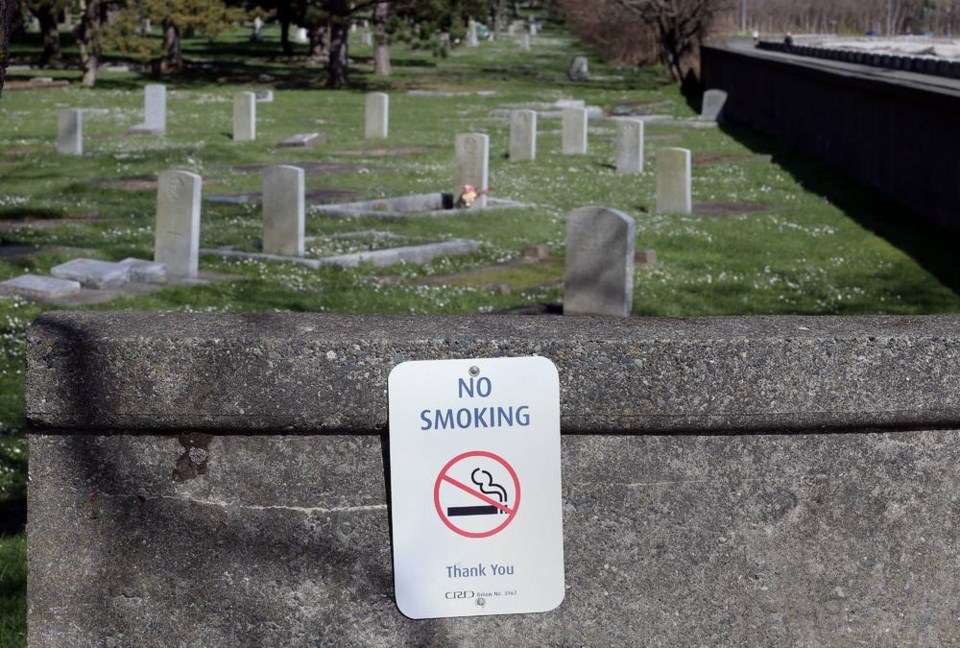New research out of Britain and the U.S. reveals a troubling development. The proportion of non-smokers developing lung cancer has risen markedly. (“Non-smokers” are defined as people who have never at any time smoked.)
One American study of three major hospitals found that the proportion of lung-cancer patients who were non-smokers jumped from eight per cent in 1990 to 15 per cent in 2013.
Another study found that across the U.S., female non-smokers amounted to 20 per cent of lung-cancer cases, while male non-smokers made up nine per cent.
The trend in Britain is even more pronounced. The number of non-smoking lung-cancer patients rose from 13 per cent in 2008 to 28 per cent in 2014.
This is no small concern. In Canada, more people die from lung cancer than from colorectal, breast and prostate cancer combined. It is the leading cause of cancer fatalities nationwide.
In men, it accounts for 25 per cent of all cancer deaths, compared to colorectal cancer at 12 per cent and prostate cancer at 10 per cent.
Among women, lung cancer causes 26 per cent of all cancer deaths, followed by breast cancer at 13 per cent and colorectal cancer at 11 per cent.
These figures in themselves are all the more striking, because it is generally believed that breast cancer and prostate cancer pose more of a risk. Yes, lung cancer survival rates are poor, though recent years have seen improvements in life expectancy of around two per cent annually.
But with all the effort to get people off cigarettes, and a corresponding drop in smoking rates, who would have thought that lung cancer remains such a threat?
Indeed, if lung cancer in non-smokers were reported as a separate category, it would still rate in the top 10 of all cancers, both in incidence and mortality.
The obvious question is what is going on here, and why are women proportionately more impacted?
Part of the answer is that men traditionally were more likely to smoke. As smoking-cessation programs made progress, more men than women gave up the habit.
In 1965, 42 per cent of the adult population smoked, compared to 15 per cent in 2015, and the majority of those were men.
It may be that the actual number of female non-smoking cancer victims hasn’t increased to the degree suggested by the numbers. Rather, as fewer men get the disease, the proportion of women increases accordingly.
But that doesn’t seem to be the whole story. It’s known that a variety of causes, beyond smoking, contribute to lung cancer. These include air pollution, the presence of radon gas in the home, a family history of the disease, exposure to secondhand smoke, and respiratory diseases such as COPD.
However, why would these affect proportionately more women than men?
As things stand, we really don’t know why the ratio of female victims is increasing.
Nor do we know why, across both genders, the rate of non-smokers getting lung cancer is continually growing.
Yet with a five-year survival rate of only five per cent in patients whose cancer has spread (and these are the vast majority), an explanation is urgently needed.



